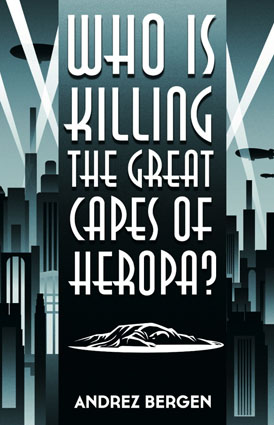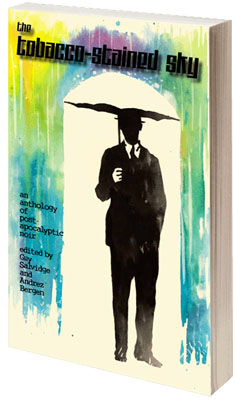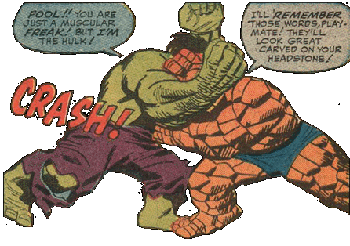 Heropa is, for me, many things but mostly about the dialogue.
Heropa is, for me, many things but mostly about the dialogue.
It circles around the way in which people interact, smearing naturalness with an underlying surrealism. Flip, awkward moments, misunderstandings, bravado and poignant asides all have their moment in the spotlight, since this is the way of the real world. People don’t always “get” one another straight off the bat — yet sometimes we click completely.
But this is also fiction, allowing artistic license to push the conversational tangents and have a bit of fun with the content.
The dialogue slant is also something that hallmarks classic hardboiled 1930s-40s detective romps — along with the 1960s Marvel comics I grew up on thanks to my older half-brother’s stash.
Just as in books like Raymond Chandler’s The Big Sleep and Dashiell Hammett’s The Maltese Falcon, Stan Lee and Jack Kirby’s work with the early versions of comic-book-people-now-famous (think Avengers, X-Men, Fantastic Four, Thor and Iron Man, along with the reinvention of Captain America — originally created by Kirby with Joe Simon in 1941) smacked dialogue right in there as a key point of the journey alongside costumes and fisticuffs.
In both the noir and comic books there’s a ton of interaction between oddball characters and the ofttimes rather scarred protagonist. Rapid-fire repartee, pithy remarks, the odd pun and bickering galore ride superbly cynical roughshod over the story to be told.
And yet, while hope and innocence should suffer under the weight of this streetwise assault, somehow they survive, especially in the output of Marvel’s workhorse Bullpen in New York in the ‘60s.
The characters they churned out were irrregular Joes and/or geeky nerds first and superheroes second, flawed individuals that even after being beaten down by oppressive odds “picked themselves up, made a quip, brushed themselves down, and moved on to the next adventure.”
This is how the similarly framed Jack Curtiss (a.k.a. Southern Cross) puts it in my new novel.
The latter qualities of hope and innocence were granted short shrift in the comic books I read from the 1980s. A darker sense prevailed in Frank Miller’s work first with Daredevil, and then the Batman. Hope bird-dogged the way of the dodo in the tail end of Chris Claremont and John Byrne’s run on X-Men.
I loved these too and they had considerable impact upon the way in which I wrote fiction, so I was in for a headspace tussle during the process of conjuring Heropa.
Writing down-and-out, fatalistic stuff actually comes easier than sunny-side-up bravado. In the first draft of the book, completed around September last year, I veered into my ‘80s influences, killed off two major characters in depressing ways, and the story ended in much darker territory.
 While this worked on so many levels, it didn’t feel right for a yarn I began as fitting homage to the cheekier comic book romps of the 1960s.
While this worked on so many levels, it didn’t feel right for a yarn I began as fitting homage to the cheekier comic book romps of the 1960s.
While there’s always a place for the edgier material and the darker spots — these pop up aplenty in Heropa, while the Chandler/Hammett stories proved the point — mostly I wore the Chandler/Hammett influences on my sleeve here in terms of one-on-one dialogue and an over-all mystery that needs to be solved… a mystery that plays second fiddle to interaction between the characters.
Still, confabulation isn’t everything.
One aspect a lot of people search out in fiction these days is the notion of world building. When it comes to this angle I’m absolutely no J.R.R. Tolkien and refuse to try to mimic the man.
However, if people take the time to read my two previous novels Tobacco-Stained Mountain Goat (2011) and One Hundred Years of Vicissitude (2012), along with Who is Killing the Great Capes of Heropa?, they would be rewarded — I hope! — with a better understanding of the last-city-on-earth dystopia that Melbourne has become, a cluey insight into the technology, politics, big business, mindset and all-too-predictable weather (rain, rain, more rain).
As it stands, Floyd Maquina, the hero of Tobacco-Stained Mountain Goat, gets a walk-on in the other two books.
To further the world-building exercise, there’s a new anthology coming out in September through Another Sky Press. This one’s called The Tobacco-Stained Sky, and is basically a fresh look at our near-future, post-apocalyptic and hardboiled Melbourne through the eyes of a whole crew of other writers and comic book artists. I also contributed stories there, further fleshing out characters from Tobacco-Stained Mountain Goat, something I continued in the short-story collection The Condimental Op that was published in July via Perfect Edge Books.
Characters that might seem incidental in one story become the protagonist of another, with some of the same situations played out from various viewpoints. Yes, I’m world building with all these elements but this is not some grand plan. The world unfolds on the fly, as I write, and each separate component (book/story/comic) is intended as a stand-alone, mostly free from the baggage of other tales.
Make sense? God, I hope so.
Next month (October) I’m publishing my first comic book — Tales to Admonish — in collaboration with fellow Melbourne artist Matt Kyme. While ostensibly, visually speaking, our love letter to the golden and silver ages of comics (and Jack Kirby’s style in particular) within the pages is a prequel story to Heropa in which we witness the demise of key character Sir Omphalos, a.k.a. the Big O.
So I think I have enough world building excess going on without hammering this into the reader every novel I write.
The same comes to detailing.
 Describing every single background quirk for a scene, using painstaking prose to do so, deprives the reader of the ability to imagine said setting. Some authors fill pages with floral descriptions of time, place, furniture, tulips, sunlight, crotches, what have you. While they’re rich in detail and often beautifully written, to be honest I tend to skim these passages and go squirrel out the dialogue.
Describing every single background quirk for a scene, using painstaking prose to do so, deprives the reader of the ability to imagine said setting. Some authors fill pages with floral descriptions of time, place, furniture, tulips, sunlight, crotches, what have you. While they’re rich in detail and often beautifully written, to be honest I tend to skim these passages and go squirrel out the dialogue.
It’s the interaction between characters that tells us so much, leaving more to the imagination and whims of we the reader.
Shakespeare did this remarkably well, and it’s the chatter in a story by Hammett or Chandler that slays me every time; the one-liners from gargoyle-ugly superhero the Thing that make his battle with the Hulk in Fantastic Four #25 (1964) so bloody memorable.
Who is Killing the Great Capes of Heropa? is available from Perfect Edge Books (ISBN: 978-1782792352).







Andrez Bergen
September 7, 2013 - 9:29 PM